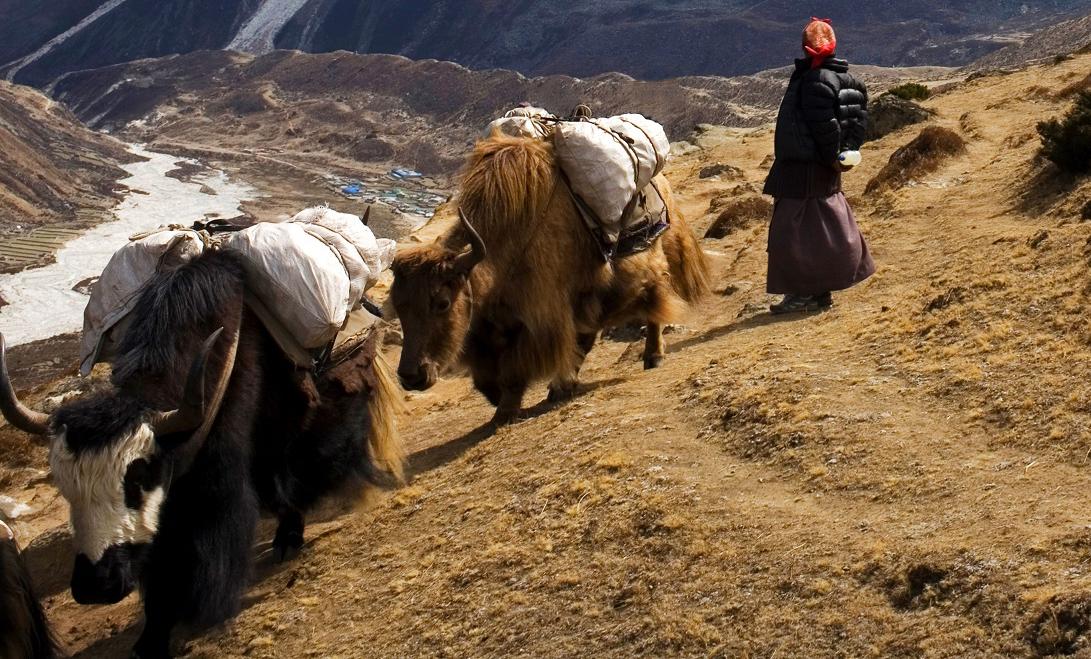For more information, please contact the University of Birmingham press office +44 (0) 121 414 2772.
Image information: Nepalese landscape, Yaks against top Ama Dablam. A Himalayan yak herder woman, representing one of the traditional subsistence lifestyles that have enabled survival in this extreme environment. The dramatic Himalayan backdrop underscores the region’s dual role as both a formidable barrier and a vital corridor for human movement. Despite geographic isolation, the genetic history of Himalayan populations reveals a deep legacy of migration and resilience, woven into the fabric of this rugged landscape.
The University of Birmingham is ranked amongst the world’s top 100 institutions, its work brings people from across the world to Birmingham, including researchers and teachers and more than 8,000 international students from over 150 countries.
‘Whole-genome sequences provide insights into the formation and adaptation of human populations in the Himalayas’ – Elena Arciero, Mohamed A. Almarri, Massimo Mezzavilla, Yali Xue, Pille Hallast, Cidra Hammoud, Yuan Chen, Laurits Skov, Thirsa Kraaijenbrink, Qasim Ayub, Huanming Yang, George van Driem, Mark A. Jobling, Peter de Knijff, Chris Tyler-Smith, Asan, Marc Haber is published by Current Biology.
Participating institutions: University of Birmingham, UK & Dubai; Wellcome Sanger Institute, UK; Department of Forensic Science and Criminology, Dubai Police GHQ, UAE; Mohammed Bin Rashid University of Medicine and Health Sciences, Dubai, UAE; University of Padova; University of Copenhagen, Denmark; Leiden University Medical Center, the Netherlands; Monash University Malaysia Genomics Platform; BGI-Shenzhen, China; Universität Bern, Switzerland; University of Leicester, UK; Quotient Therapeutics, Saffron Walden, UK; Jackson Laboratory for Genomic Medicine, Farmington, USA.
